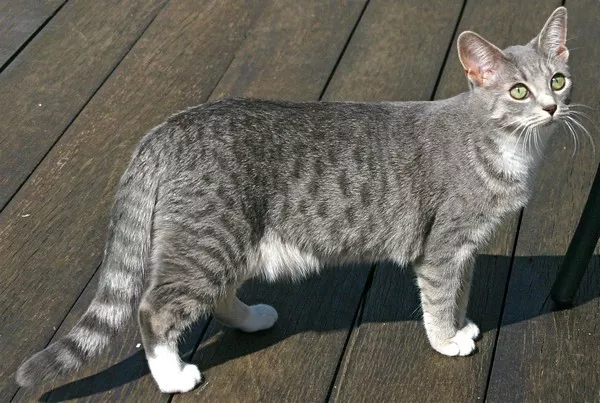In recent times, Ladakh has witnessed an upswing in reported sightings of the elusive and captivating Pallas’s cat. The surge in tourists, including photographers from various corners of the globe, exploring the Ladakh region has significantly contributed to this increased visibility of the woolly Pallas’s cat. Furthermore, emerging research indicates a potential correlation between the greater availability of prey and the higher incidence of Pallas’s cat sightings in the region, though scientists remain cautious about definitively establishing this connection. Although prey remains relatively scarce overall, certain areas may have seen an uptick in available prey, leading to heightened Pallas’s cat presence.
The Pallas’s cat, scientifically known as Otocolobus manul, is a species adapted to cold climates and roughly the same size as a domestic cat. These unique felines inhabit the lofty peaks of the Himalayan range and were christened after Peter Simon Pallas, who first documented them in 1776 based on specimens collected near Lake Baikal, Russia.
The first recorded encounter with a Pallas’s cat in Ladakh occurred in 2002 when Khenrab Phuntsog, now a seasoned 45-year-old wildlife guard with the Ladakh forest department, spotted a peculiar cat-like creature descending a hillside while patrolling Hanle village. Phuntsog recollected, “When I viewed it through binoculars, its shape resembled a cat’s. Its thick, woolly, and dark-colored fur set it apart, making it distinct from any cat I had seen before. Because of its fluffy fur, this cat appeared larger than its actual size.”
He added, “At the time, we had no idea which cat species it was. It was only after returning to the office and discussing it with my colleagues that I learned it was a Pallas’s cat. This marked our first encounter with this unique feline, and since then, we have encountered it in many locations, contributing to its conservation.” Over his 23 years of patrolling Ladakh’s wildlife areas, Phuntsog has rescued two Pallas’s cat cubs that were reported to be abandoned by their mother.
The Pallas’s cat, also referred to as manul, boasts a distinctive appearance characterized by a muscled body, short legs, dense fur, flat ears, and round pupils – a deviation from the usual elliptical pupils found in most small cat species. These cats often take refuge in vacant marmot burrows and rocky crevices within steppe and grassland ecosystems, where they give birth to their cubs. Typically active during the morning and evening hours, Pallas’s cats are territorial creatures, with territories spanning up to 100 kilometers. They can produce litters of as many as eight cubs at a time and have a lifespan of up to six years. These cats communicate through yelping, growling, and purring.
While the presence of Pallas’s cats in Ladakh has been documented in Indian literature since the early 1970s, they remain relatively infrequent visitors to the region. Confirmed sightings have occurred within the Trans-Himalayan regions of Ladakh and Sikkim, notably in Hanle, Staklung, and Lal Pahari within the Changthang Wildlife Sanctuary. Additionally, in Sikkim, a single sighting at Tso Lhamo Plateau, situated at an elevation of 5,073 meters, stands as the highest recorded altitude for a Pallas’s cat. Despite occasional reports, the presence of these cats in Himachal Pradesh’s Spiti area, as mentioned in a 1998 report, has yet to receive official confirmation.
Pankaj Raina, Ladakh Wildlife Conservator, shared insights into the expanding habitat of Pallas’s cats within the Ladakh region, stating, “Previously, it was believed that these cats were mainly found around the wetlands of Changthang, but recent experiences indicate that they are found in many parts of Ladakh.” Raina further emphasized that Pallas’s cats were now more visible due to increased ecotourism, leading to an augmented number of people and, consequently, more sightings.
Raina suggested, “Last year in Hanle, we observed two mothers, each with three cubs. Although one of the mothers was not found, the other one was repeatedly seen in the area with her offspring. This influx of visitors (and hence more eyes looking out for the cat) could be driving the increased sightings.”
Additionally, Raina pointed to the role of prey availability in Pallas’s cat sightings, explaining, “When there is an increase in the number of prey species for these cats, it becomes easier for them to feed and raise their young. In one year, we observed a Pallas’s cat giving birth to triplets twice in Hanle. However, further research is needed to understand this phenomenon fully.” While the overall prey population remains limited, certain areas may have experienced an increase in prey, potentially driving the rise in Pallas’s cat numbers.
Lobzang Visuddha, President of the Wildlife Conservation and Birds Club of Ladakh, emphasized that Hanle and Changthang were renowned locations for observing Pallas’s cats. He explained, “In the wetland areas of the Hanley Basin, Pallas’s cat finds an abundance of prey, which promotes rapid breeding when food is plentiful.”
He added, “Before 2022, this cat was not spotted as frequently. However, this year, photographers from around the country and the world flocked to capture images of these cats. Research suggests that Pallas’s cats reproduce more readily when prey is abundant, so the increased availability could explain the rise in numbers.”
Addressing the conservation challenges for these unique felines in Ladakh, Tsewang Namgyal, Director and Senior Scientist of the Snow Leopard Conservancy India Trust, an NGO focused on wildlife conservation in Ladakh, noted the potential disruption of Pallas’s cat habitat due to roads traversing rocky terrain. These roads, while providing easy access for humans, can disturb the natural movements of Pallas’s cats as they navigate between hunting sites and dens. Vehicle collisions on these roads pose a significant threat to the cats, and the noise generated by passing vehicles can disrupt their peaceful habitat.
Namgyal also highlighted the growing influx of tourists as a challenge to conservation efforts. He explained, “While road signage aids tourists in safely navigating the area, its absence can lead travelers on bikes or in vehicles to inadvertently enter eco-sensitive zones where the Pallas’s cat also resides.” Addressing this issue is crucial for maintaining the ecosystem’s delicate balance and ensuring the safety of both tourists and wildlife in Ladakh.
Furthermore, climate change poses a formidable challenge to conservation efforts. Raina emphasized, “Climate change is akin to a silent assassin. It brings more frequent rainfall and encourages the growth of vegetation. However, the specific impact on these small cats remains uncertain until further research is conducted. If their habitat experiences a shortage of food due to these changes, it will inevitably affect conservation efforts.”
As the mysterious and captivating Pallas’s cats continue to garner attention in Ladakh, the delicate balance between their conservation and the region’s burgeoning ecotourism industry remains a subject of careful consideration for wildlife authorities and enthusiasts alike.



























